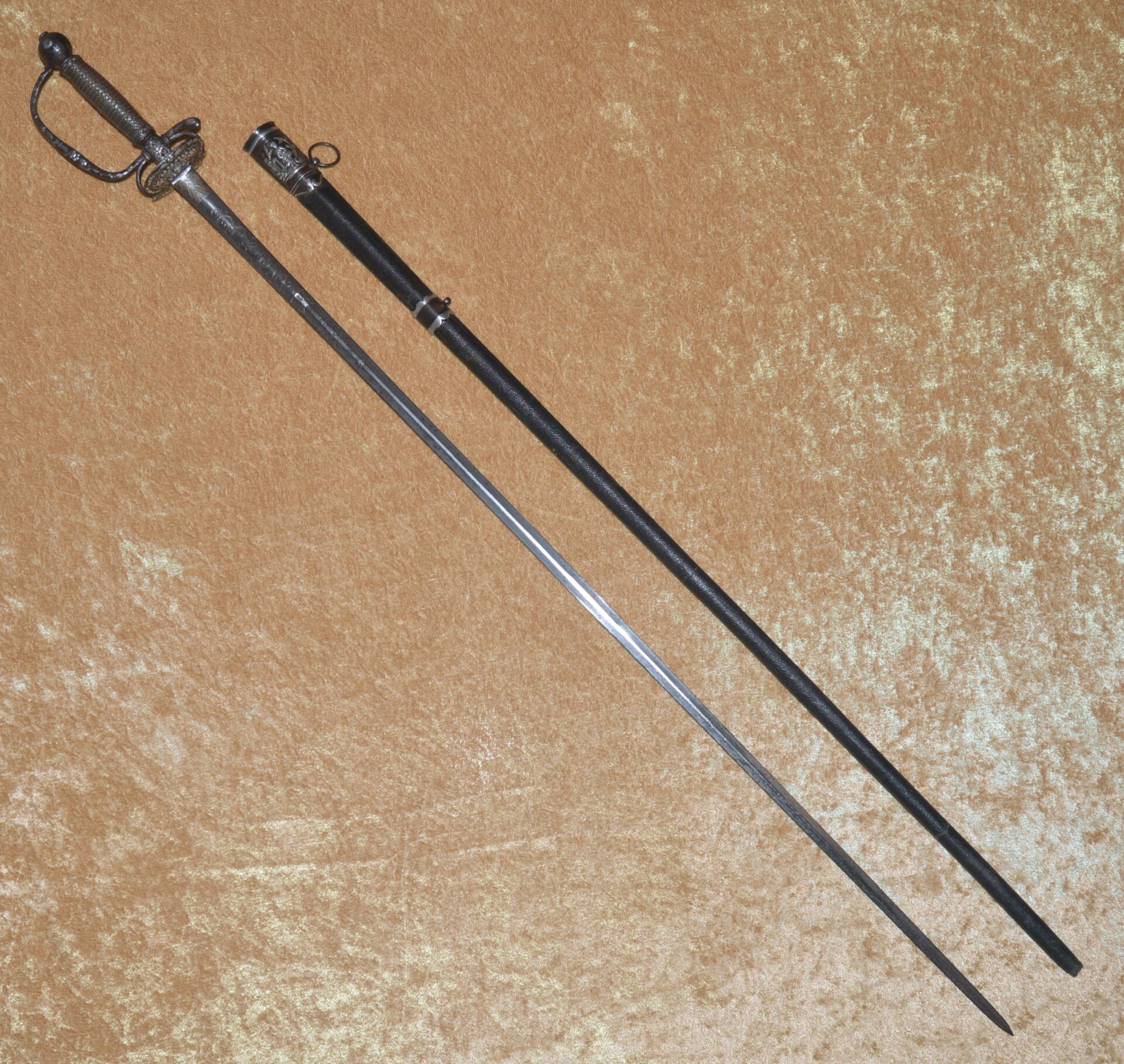Description
The second half of the 17th C and early 18th C brought significant changes to the swords worn by European gentlemen. During the first half of the 17th C blade lengths gradually increased, as it was thought the extra length would give a reach advantage in a duel. Hilts also had to be larger and heavier to balance the longer blades. It became such a problem at the English court that Queen Elizabeth decreed that sword blades could not exceed 36”. However, in most countries the blade lengths continued to increase until about the mid-17th C, with some blades nearing 5 feet in length. At some point, it was determined that a shorter, lighter sword could get inside the reach of a long rapier and defeat it. This caused blade lengths to start shortening, with hilt sizes decreasing as well. However, many of the features of the earlier rapiers remained, gradually transitioning to the smallsword most typically associated with the 2nd half of the 18th C. The sword offered here is of the late transitional period, having a smaller hilt with pas d’ane, asymmetrical shell guard, knuckle bow, and small ovoid pommel. It has a grip wrapped with alternating strands of twisted silver and brass wire, with matching Turks heads top and bottom, a feature found mostly on 17th C pieces, but continued into the early 18th C as well. The double-edged 29 5/8” (75 cm) blade has a long lens-section ricasso, the balance of hexagonal section. The upper third is engraved with foliage and sun faces, filled with gold. The feature most associated with the transitional period is the manner of hilt decoration. Rather than the cast brass and silver hilts, sometimes gilded, of the later 18th C smallswords, this example is of blackened chiseled steel, with chiseled grooves into which solid silver was pounded and shaped to form the design. The striking contrast between the blackened background and the raised silver decoration produced a very attractive hilt. It was a much more time-consuming method than later examples and that is why it gradually gave way to later methods. It retains its original black leather-covered wood scabbard (drag and one carry ring missing), with high quality black steel mounts decorated with silver; the throat depicting a drummer in uniform with castle in the background, reverse with stand of arms and vacant oval escutcheon. Blade very good, with mostly crisp engraving and areas of light pitting. The hilt with small silver losses, greater on the pommel. Overall length 36” (91 cm).

















 Unique Italian (Genoa) Cutlass, Early 18th C
Unique Italian (Genoa) Cutlass, Early 18th C  Named Prussian Infantry Officer’s Sword, First Quarter 19th C
Named Prussian Infantry Officer’s Sword, First Quarter 19th C  New England Flintlock Fowler, ca. 1800
New England Flintlock Fowler, ca. 1800
 Silver Inlaid Transitional Rapier/Smallsword, Late 17th/Early 18th C
Silver Inlaid Transitional Rapier/Smallsword, Late 17th/Early 18th C